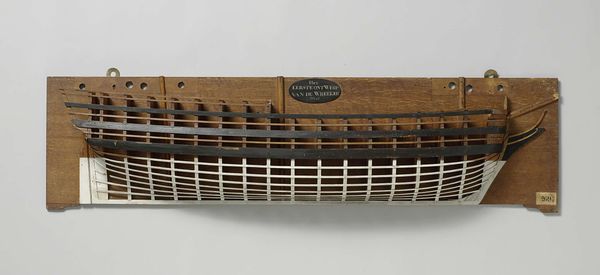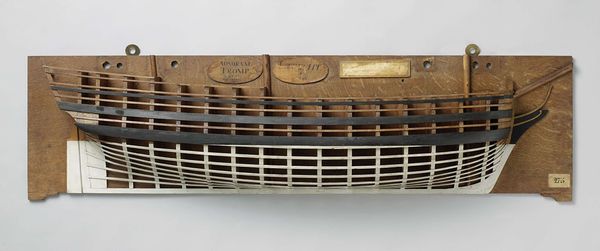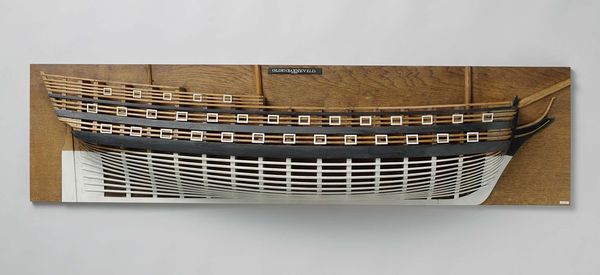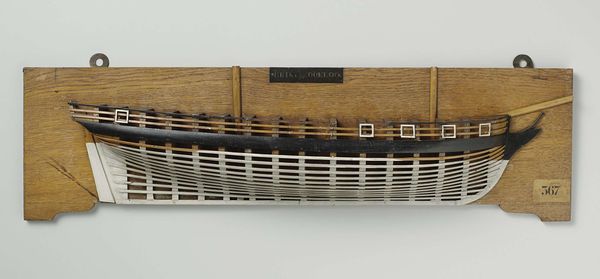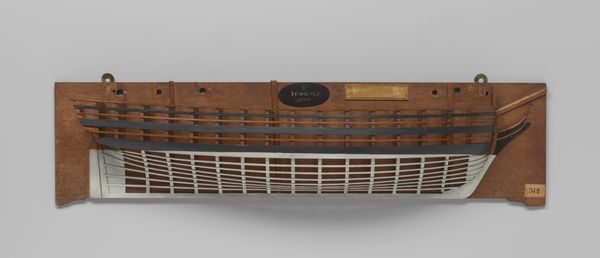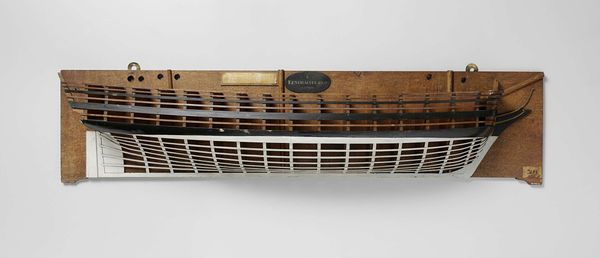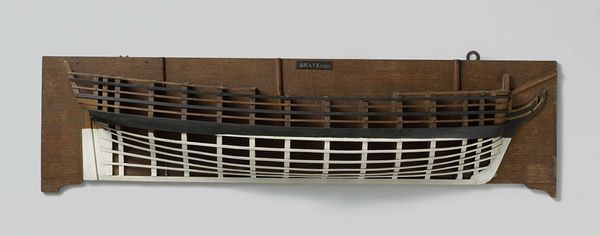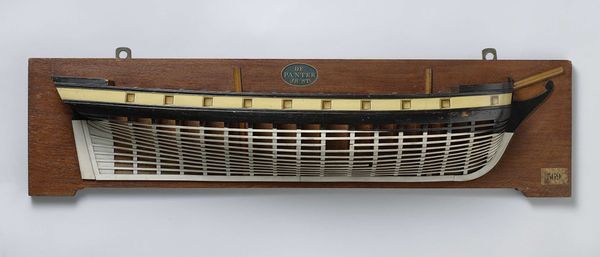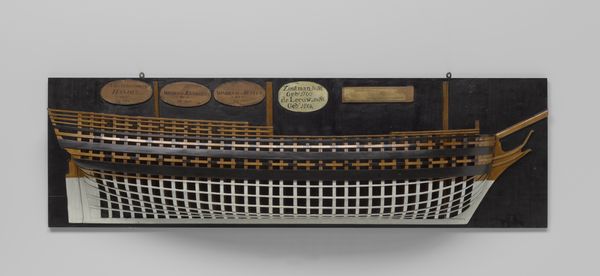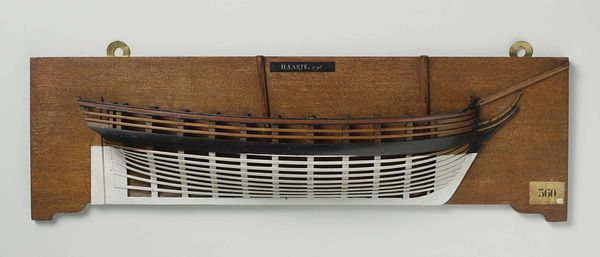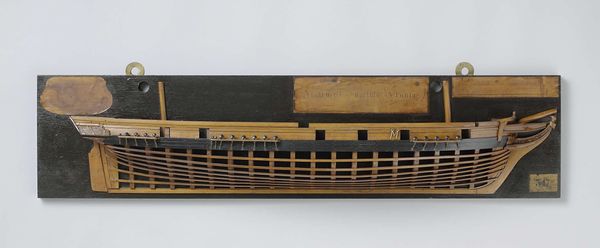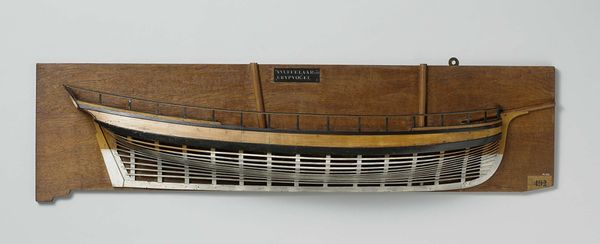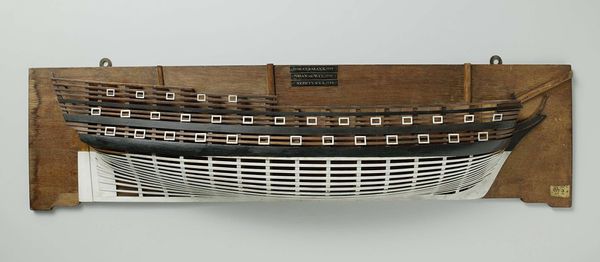
sculpture, wood, architecture
#
sculpture
#
sculpture
#
architecture model
#
wood
#
architecture
Dimensions: height 37 cm, width 130.6 cm, depth 15.3 cm
Copyright: Rijks Museum: Open Domain
Curator: Editor: So, this is a “Half Model of a 74-Gun Ship of the Line,” made around 1806, artist is anonymous and created with wood. It looks incredibly precise. What strikes me is the layering – how does this construction influence your perception of it? Curator: The model presents an interesting problem of representation. We have a three-dimensional object, a ship, rendered in partial form as a two-dimensional relief. The layering you note becomes crucial; it's not merely decorative but structurally informative. Notice how each layer articulates a different plane of the ship's hull, moving from the outer skin to the inner framework. Editor: Ah, so the layered effect isn't just aesthetic; it's integral to understanding the ship's structure! How do the contrasting materials, the dark and light wood, play into this representation? Curator: The colour differentiation heightens the visual complexity. The darker, heavier woods delineate the outer form and provide a strong linear element, anchoring the model. In contrast, the lighter wood seems to represent the interior structure. What about the lines - does this linear emphasis clarify or complicate the form in your view? Editor: It’s almost like an architectural drawing rendered in three dimensions! The lines create both a sense of order and depth but they are also very repetitive; but I’m still curious as to why someone would only do half of it instead of the full vessel. Curator: Precisely! The linear framework serves as a scaffold upon which the eye can reconstruct the full volume of the ship. The half form isolates the essential structural information which shifts focus away from the ornamental or superficial. The half model embodies abstraction by reducing something whole and functional to a network of formal relations. Does this reading resonate with you? Editor: It does, now that you point it out. I now see the interplay of materials, the layering, the lines as more than just design elements—they’re a language, an intricate diagram almost. Thank you! Curator: Indeed. Observing the parts helps to clarify the whole.
Comments
No comments
Be the first to comment and join the conversation on the ultimate creative platform.
